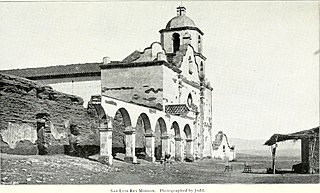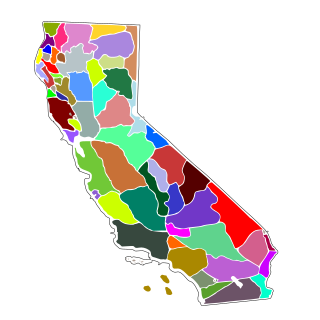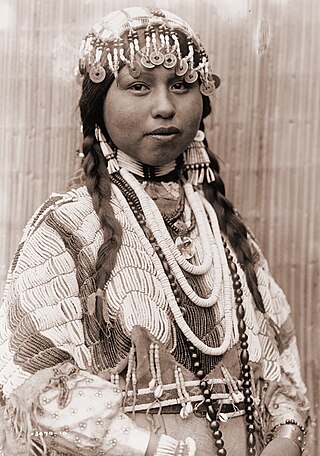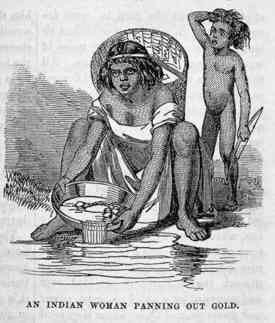
The Indian Territory and the Indian Territories are terms that generally described an evolving land area set aside by the United States government for the relocation of Native Americans who held original Indian title to their land as a sovereign independent state. The tribes ceded land they occupied in exchange for land grants in 1803. The concept of an Indian Territory was an outcome of the U.S. federal government's 18th- and 19th-century policy of Indian removal. After the American Civil War (1861–1865), the policy of the U.S. government was one of assimilation.

The Northwest Ordinance, enacted July 13, 1787, was an organic act of the Congress of the Confederation of the United States. It created the Northwest Territory, the new nation's first organized incorporated territory, from lands beyond the Appalachian Mountains, between British North America and the Great Lakes to the north and the Ohio River to the south. The upper Mississippi River formed the territory's western boundary. Pennsylvania was the eastern boundary.

Tribal sovereignty in the United States is the concept of the inherent authority of Indigenous tribes to govern themselves within the borders of the United States.

The Indian Act is a Canadian act of Parliament that concerns registered Indians, their bands, and the system of Indian reserves. First passed in 1876 and still in force with amendments, it is the primary document that defines how the Government of Canada interacts with the 614 First Nation bands in Canada and their members. Throughout its long history, the act has been a subject of controversy and has been interpreted in different ways by both Indigenous Canadians and non-Indigenous Canadians. The legislation has been amended many times, including "over five major changes" made in 2002.

An Indian reservation is an area of land held and governed by a U.S. federal government-recognized Native American tribal nation, whose government is semi-sovereign, subject to regulations passed by the United States Congress and administered by the United States Bureau of Indian Affairs, and not to the U.S. state government in which it is located. Some of the country's 574 federally recognized tribes govern more than one of the 326 Indian reservations in the United States, while some share reservations, and others have no reservation at all. Historical piecemeal land allocations under the Dawes Act facilitated sales to non–Native Americans, resulting in some reservations becoming severely fragmented, with pieces of tribal and privately held land being treated as separate enclaves. This jumble of private and public real estate creates significant administrative, political, and legal difficulties.

The Indian Citizenship Act of 1924, was an Act of the United States Congress that granted US citizenship to the indigenous peoples of the United States. While the Fourteenth Amendment to the United States Constitution defines a citizen as any persons born in the United States and subject to its laws and jurisdiction, the amendment had previously been interpreted by the courts not to apply to Native peoples.

Peter Hardeman Burnett was an American politician who served as the first elected Governor of California from December 20, 1849, to January 9, 1851. Burnett was elected Governor almost one year before California's admission to the Union as the 31st state in September 1850.

The history of slavery in California began with the enslavement of Indigenous Californians under Spanish colonial rule. The arrival of the Spanish colonists introduced chattel slavery and involuntary servitude to the area. Over 90,000 Indigenous peoples were forced to stay at the Spanish missions in California between 1770 and 1834, being kept in well-guarded mission compounds. This has been described as de facto slavery, as they were forced to work on the mission's grounds amid abuse, malnourishment, overworking, and a high death rate. Indigenous girls were taken from their parents to be housed in guarded dormitories known as monjeríos for conversion to Catholicism and control over their sexuality.
Indian termination is a phrase describing United States policies relating to Native Americans from the mid-1940s to the mid-1960s. It was shaped by a series of laws and practices with the intent of assimilating Native Americans into mainstream American society. Cultural assimilation of Native Americans was not new; the belief that indigenous people should abandon their traditional lives and become what the government considers "civilized" had been the basis of policy for centuries. What was new, however, was the sense of urgency that, with or without consent, tribes must be terminated and begin to live "as Americans." To that end, Congress set about ending the special relationship between tribes and the federal government.

The Indian Relocation Act of 1956 was a United States law intended to create a "a program of vocational training" for Native Americans in the United States. Critics characterize the law as an attempt to encourage Native Americans to leave Indian reservations and their traditional lands, to assimilate into the general population in urban areas, and to weaken community and tribal ties. Critics also characterize the law as part of the Indian termination policy between 1940 and 1960, which terminated the tribal status of numerous groups and cut off previous assistance to tribal citizens. The Indian Relocation Act encouraged and forced Native Americans to move to cities for job opportunities. It also played a significant role in increasing the population of urban Native Americans in succeeding decades.

Indigenous peoples of California, commonly known as Indigenous Californians or Native Californians, are a diverse group of nations and peoples that are indigenous to the geographic area within the current boundaries of California before and after the colonization of Europeans. There are currently 109 federally recognized tribes in the state and over forty self-identified tribes or tribal bands that have applied for federal recognition. California has the second-largest Native American population in the United States.
Admission to the Union is provided by the Admissions Clause of the United States Constitution in Article IV, Section 3, Clause 1, which authorizes the United States Congress to admit new states into the Union beyond the thirteen states that already existed when the Constitution came into effect. The Constitution went into effect on June 21, 1788 in the nine states that had ratified it, and the U.S. federal government began operations under it on March 4, 1789, when it was in effect in 11 out of the 13 states. Since then, 37 states have been admitted into the Union. Each new state has been admitted on an equal footing with those already in existence.

Aboriginal title in New York refers to treaties, purchases, laws and litigation associated with land titles of aboriginal peoples of New York, in particular, to dispossession of those lands by actions of European Americans. The European purchase of lands from indigenous populations dates back to the legendary Dutch purchase of Manhattan in 1626, "the most famous land transaction of all." More than any other state, New York disregarded the Confederation Congress Proclamation of 1783 and the follow-on Nonintercourse Acts, purchasing the majority of the state directly from the Iroquois nations without federal involvement or ratification.

Aboriginal title in California refers to the aboriginal title land rights of the indigenous peoples of California. The state is unique in that no Native American tribe in California is the counterparty to a ratified federal treaty. Therefore, all the Indian reservations in the state were created by federal statute or executive order.

An Organic Act is a generic name for a statute used by the United States Congress to describe a territory, in anticipation of being admitted to the Union as a state. Because of Oklahoma's unique history an explanation of the Oklahoma Organic Act needs a historic perspective. In general, the Oklahoma Organic Act may be viewed as one of a series of legislative acts, from the time of Reconstruction, enacted by Congress in preparation for the creation of a united State of Oklahoma. The Organic Act created Oklahoma Territory, and Indian Territory that were Organized incorporated territories of the United States out of the old "unorganized" Indian Territory. The Oklahoma Organic Act was one of several acts whose intent was the assimilation of the tribes in Oklahoma and Indian Territories through the elimination of tribes' communal ownership of property.

The Native American peoples of Oregon are the set of Indigenous peoples who have inhabited or who still inhabit the area delineated in today's state of Oregon in the Pacific Northwest region of the United States. While the state of Oregon currently maintains relations with nine federally recognized tribal groups, the state was previously home to a much larger number of autonomous tribal groups, which today either no longer exist or have been absorbed into these larger confederated entities. Six of the nine tribes gained federal recognition in the late 20th century, after undergoing the termination and restoration of their treaty rights starting in the 1950s.
The California Indian Wars were a series of wars, battles, and massacres between the United States Army, and the Indigenous peoples of California. The wars lasted from 1850, immediately after Alta California, acquired during the Mexican–American War, became the state of California, to 1880 when the last minor military operation on the Colorado River ended the Calloway Affair of 1880.

Forced labor in California existed as a system technically different but similar to chattel slavery. While California's state constitution outlawed slavery, the 1850 Act for the Government and Protection of Indians allowed the indenture of Native Californians. The act allowed for a system of custodianship for indigenous children and a system of convict leasing. These systems were backed by the legalized corporal punishment of any Native Californian, and the stripping of many legal rights of Native Californians.

The California genocide was the killing of thousands of Indigenous peoples of California by United States government agents and private citizens in the 19th century. It began following the American Conquest of California from Mexico, and the influx of settlers due to the California Gold Rush, which accelerated the decline of the Indigenous population of California. Between 1846 and 1873, it is estimated that non-Natives killed between 9,492 and 16,094 California Natives. Hundreds to thousands were additionally starved or worked to death. Acts of enslavement, kidnapping, rape, child separation and displacement were widespread. These acts were encouraged, tolerated, and carried out by state authorities and militias.
















